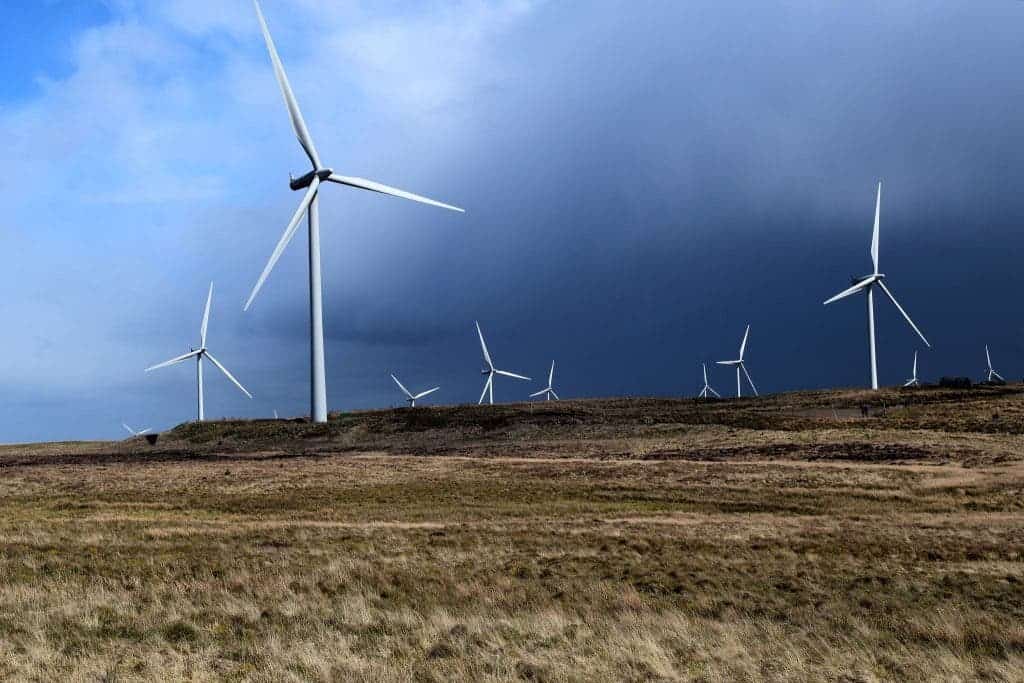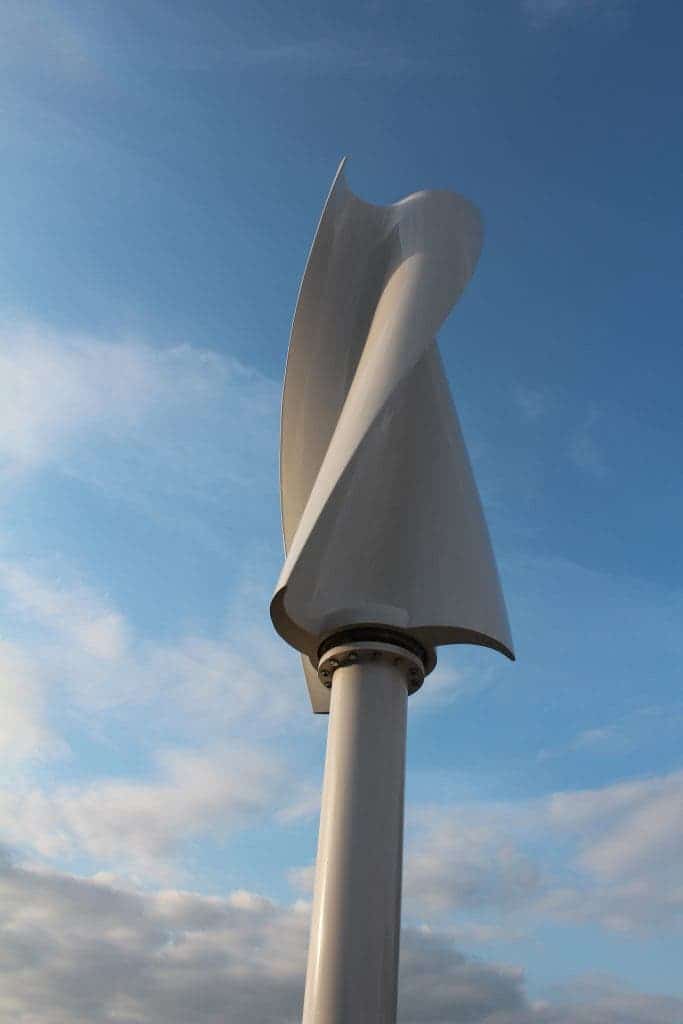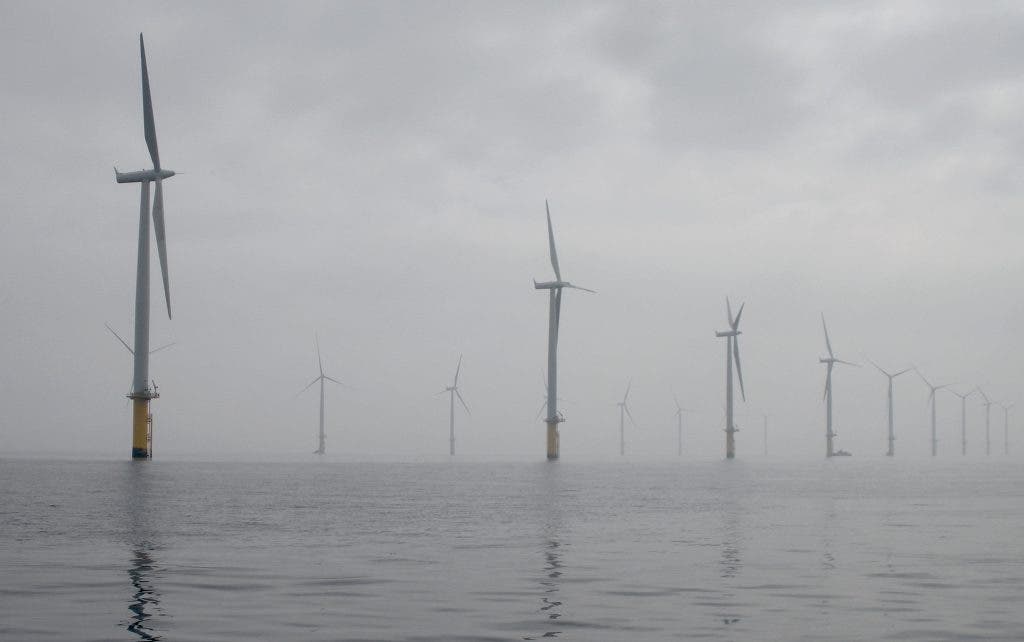They look like airplane propellers running circles on the spot, spinning round and round all day long. Wind turbines take the kinetic energy from the wind and use their giant rotors to capture some of it turn it into electricity, and they may play a key role in saving us from catastrophic climate change. Let’s take a closer look at how wind turbines actually work.

Wind turbines are based on a simple principle, in essence: the wind turns the blades, which causes the axis to rotate, which is attached to a generator, which produces electricity. The stronger the wind, the more electricity is generated. That’s why we usually see industrial-scale wind farms with high towers and large blades across the world: larger blades can gather more power and are more efficient. But while the basic principle is simple, the technology is complex.
Windmills make the world go round
A turbine is a machine that spins around and catches some of the energy passing by. All sorts of machines use turbines, from jet engines to hydroelectric plants. In a wind turbine, the rotor blades are the “turbine” part, similar to airfoil wings on a plane. They have a curved shape and gain kinetic energy (energy of movement) when the wind blows.
Although we talk about “wind turbines,” the turbine is actually just one part of these machines. For most turbines, another key part is the generator, whose gears convert the relatively slow rotation of the spinning blades into higher-speed motion. So the wind provides the movement and torque and the generator does the rest, being an essential part of all turbines.

The longer the rotor blades, the more energy they can capture from the wind. The blades multiply the wind’s force like a wheel and axle, so a breeze is often enough to make the blades turn around. Even so, wind turbines don’t generate maximum power most of the time – a deliberate feature of their design to work efficiently in ever-changing winds.
A typical wind turbine nacelle is 85 meters (280 feet) off the ground, and there’s a good reason for this. Wind travels much faster when it’s clear of any obstructions at ground level. So if a turbine’s rotor blades are high in the air, they can capture much more wind energy than they would lower down — and capturing energy is what wind turbines are all about.
Most wind turbines have a capacity of 2-3 megawatts (MW), which can produce over 6 million kilowatt-hours (kwh) of electricity every year. That’s enough to meet the electricity demand of around 1,500 households. The faster the wind blows, the more electricity is generated – up to a certain level. If the wind is too strong, the turbines will shut down to prevent damage.

Wind farms are planned to make sure they’re in locations with a reliable amount of wind all year round. This tends to be on the summit of a hilltop with lots of open space around, and in coastal locations. A wind turbine is typically 30-45% efficient – rising to 50% efficient at times of peak wind. If they were 100% efficient, the wind would drop after going through the turbine.
Types of wind turbines
There are two basic types of wind turbines, horizontal-axis and vertical-axis, and the size of the turbine varies widely. The length of the blades is the biggest factor in determining the amount of electricity a wind turbine can generate. While small turbines can generate about 10 KW, the largest one in operation can generate up to 10MW. Even larger ones are currently in development, especially for the offshore.
Horizontal-axis turbines are the most common by far — these are the wind turbines most of us are familiar with. Most of these turbines have three blades and operate upwind, with the turbine pivoting at the top of the tower so the blades face into the wind.
Meanwhile, vertical-axis turbines are more similar to an eggbeater than to an airplane propeller. They are omnidirectional, which means they don’t have to be adjusted to point into the wind to operate. The blades are attached are the top and bottom of the vertical rotor. As they don’t perform as well as horizontal ones, they are much less common, but they do offer great promise in some situations.

Using wind turbines
Land-based wind turbines can be connected to a utility power grid, combined with a photovoltaic system or even be used as stand-alone applications by homeowners and farmers. For utility-scale (megawatt-sized) sources of wind energy, a large number of wind turbines are usually built close together to form a wind plant, also referred to as a wind farm.
When turbines of any size are installed on the “customer” side of the electric meter, they are called “distributed” wind turbines. Most turbines currently found in distributed applications are small and are used for residential, agricultural, and small industrial applications.
Having a turbine can even give you profits, as you can sell the extra energy that you don’t use (if the national grid allows it). However, installing a wind turbine is generally more complicated than something like a solar panel.

Offshore wind energy is a relatively new industry around the world. The turbines tend to be massive, even taller than the Statue of Liberty in some cases. Their components are transported by ships and barges, reducing the logistical challenges of land-based turbines. They can capture powerful ocean winds and generate vast amounts of energy.
The electricity produced by offshore wind turbines travels back to land through a series of cable systems that are buried in the seafloor. This electricity is channeled through coastal load centers that prioritize where the electricity should go and distributes it into the electrical grid to power homes, schools, and businesses. This makes offshore wind turbines more expensive to install and manage, but they also produce more energy — a common tradeoff.
Advantages and disadvantages of wind turbines
It’s hard to imagine why anyone would object to clean and green wind turbines, especially when compared with dirty coal-fired plants. But they do have some disadvantages that need to be considered carefully.
Firstly, they don’t generate as much power as conventional gas, nuclear, or coal plants. A typical turbine has a maximum power of 2MW, enough to supply 1,000 homes, if it produces energy 30% of the time. The largest offshore wind turbines can make about 13MW as winds are stronger and more persistent at sea, powering about 6,500 homes.This means we would need 1,000 2MW turbines to make as much power as a sizable (2,000MW) nuclear power or fossil fuel station. In practice, as fossil fuel and nuclear power stations produce energy consistently while wind is variable, you would need rather more. Wind power is variable and an efficient power grid needs a predictable supply of power to meet varying demand.
That’s why a mixture of different types of energy would be ideal. Some of these will make power whenever they can, like wind, some will operate continually, like nuclear, some will produce power at peak times, like hydroelectric plants and some will raise or lower the power at short notice, like natural gas. Large, efficient batteries can mend this problem but wind can’t be the only form of energy in the mix.
Wind turbines also can’t be jammed together. They have to be spaced some distance apart and take up a lot of space. Powering an entire country with wind alone would require covering a vast land area with turbines. Connecting a lot of wind turbines to the power grid can also be much more difficult than just wiring up a single power plant.
Turbines can also be disturbing to wildlife as they’re quite noisy, they bring humans to the area, and they’re a significant collision risk for birds. The design of most turbines makes them hard to see for birds, promoting impacts. That’s why studies have suggested painting one of the rotor blades in black to help birds see the turbines and avoid collisions.
On the plus side, wind turbines are a leading clean energy source. Once constructed, they don’t generate carbon dioxide emissions, which are causing global warming, or the sulfur dioxide emissions, which cause acid rain. The energy they make is limitless and free over a typical lifetime of 25 years, except for spare parts and maintenance.
Building them has some environmental impact as the towers and nacelles have metal and concrete foundations to stop them falling over. Recycling wind turbines is notoriously difficult, and acts as a sort of “Achilles heel” of wind energy.
Even so, they have among the lowest carbon dioxide emissions of any form of power generation when looking at their entire operation lifespan. They are also much cheaper in terms of kilowatt-hour of power they produce.
How big is wind energy now?
Last year was the best year in history for the global wind industry with 93 GW of new capacity installed – a 53% year-on-year increase, according to the Global Wind Energy Council (GWEC). Today there’s 743GW of wind power capacity worldwide, helping to avoid 1.1 billion tons of CO2 globally – equivalent to the annual emissions of South America.
Still, this growth isn’t sufficient to ensure the world becomes carbon neutral by 2050, as agreed in the 2015 Paris Agreement on climate change. The world needs to be installing wind power three times faster over the next decade in order to stay on a net-zero pathway and avoid the worst impacts of climate change, according to GWEC’s estimates.
Wind power will certainly play a big part in the coming years, as the world says goodbye to fossil fuel energy sources to reduce greenhouse gas emissions. But how big a part will depend on where in the world you are and whether there are better alternatives. In countries with windy weather (so, the vast majority of the world), it will be definitely a strong contender.


